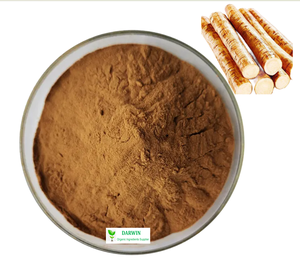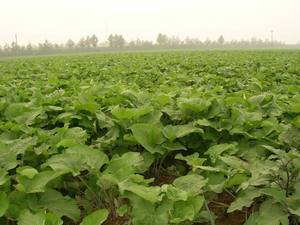(232 products available)









































































































































































Burdock root powder
The dried wide-leaved plantain looking somewhat similar to a burdock root and smashing it into pieces that can be easily identified as burdock root powder. This has to be deeply effective when it's mixed up with all kinds of foods and drinks because it is so easy to use. It's also a product used for medicine as it's considered a high concentration of all the good nutrients from the burdock root. When storing, make sure the atmosphere is dry and cold so the powder doesn't get old.
Burdock root tea
The burdock root is dried and pre-cut into small pieces to produce burdock root tea. Tea bags are burdock roots that can be subjected to steeping in hot water to generate a nourishing and revitalizing liquid. Frequently, people use Burdock root Tea to purify the blood, boost immunity, and enhance body functions. Ensure that burdock tea contains no moisture and is housed in a dark, cool, and dry location devoid of moisture and air exposure.
Whole dried burdock root
Burdock root is a valuable plant often used in medicine. Whole dried burdock root is often used in cooking or herbal medicine. The roots are sometimes left uncut to preserve their original shape. Whole dried roots must be soaked and then dried before they're used in any recipes or herbal preparations. They will then hold on to their effectiveness, so it's important to keep them in dry and cold places.
Burdock root extracts
Concentrated liquid or solid forms, such as tinctures or capsules, are also made from burdock root. These are extracts that are made from macerated and soaked or from powder and are often burdock root to burdock root available in capsule or liquid form. Extracts provide similar benefits but are stronger than standardized doses. Store extracts according to instructions on the label but normally in dark, cool areas.
Culinary uses
The wide-leaved plantain produces edible mucky tied roots that can be washed, peeled, and consumed fresh like vegetables in the form of salads or snacks. The roots can be dried and used in the production of burdock root tea, which has a great and mild flavor.
Medical uses
In traditional medicine, wide-leaved plantains are used to make medicinal preparations. It's likely to purify the blood, clean the skin, and improve general health. As a powerful antioxidant, it's said to fight free radical damage. It's also anti-inflammatory and can also soothe inflammation and reduce pain. It is thought that burdock root may be used to treat different types of wounds and injuries due to its antibacterial properties. Consequently, external application also helps speed up the healing of cuts, bruises, and infections.
Modern medicine uses
Burdock root has been studied for its potential anti-cancer properties, especially in the case of skin cancer. Burdock root is a popular ingredient in natural skincare treatments. Skin-care treatments are usually made with extracts of burdock to cure acne and eczema and enhance or bring about better skin health. Due to its high fiber content, burdock root acts as a prebiotic that supports good bacteria in the gut. This helps improve digestion and support overall gut health. Burdock root is sometimes used in detoxification products, primarily focused on cleansing the liver and kidneys.
Herbal medicine uses
It's often mentioned in Ayurveda and traditional Chinese medicine (TCM) for various health problems. In TCM, it is known to cool the body and eliminate toxins, and in Ayurveda, it is praised for balancing doshas and promoting health. Today, wide-leaved plantain is still widely used in outside and inside medicine in herbal remedies and health-promoting foods all over the world.
Rich in nutrients
Dried wide-leaved plantain is very rich in antioxidants, vitamins, and minerals. The antioxidants include quercetin, lutein, and phenolic acids, which act to neutralize free radicals and thereby reduce oxidative stress. Burdock root contains vitamins A, C, and B vitamins, which improve immunity and skin health and provide energy. It contains minerals such as potassium, magnesium, calcium, and iron. Potassium helps balance fluids and supports heart health. Magnesium and calcium help strengthen bones and support muscle function. Iron helps create blood cells and carry oxygen throughout the body.
Blood purifier
Burdock root is used in clear skin active blood-purifying products that help remove toxins and waste from the blood. Ancient users believed it helped purify the blood and improve overall health. It possesses antibacterial properties and is believed to support the immune system by fighting infections and diseases. This contributes to improved skin health and a reduction in acne, eczema, or other skin diseases.
Anti-inflammatory and pain relief
Burdoc root can be used by people who experience chronic inflammation, which is at the center of most ailments, including arthritis and digestive disorders. It contains anti-inflammatory chemicals that relieve inflammation and associated pains. This cooling effect can also be soothing for those suffering from fevers and inflammation.
Digestive support
The high fiber content in burdock root helps improve digestive health by promoting regular bowel movements and preventing constipation. It acts as a prebiotic, fostering healthy gut bacteria and thus improving microbial balance. This leads to improved overall digestion and nutrient absorption.
Skincare and detoxification
When applied to the skin, burdock root helps treat acne, eczema, and psoriasis because of its antibacterial and anti-inflammatory properties. It helps in purifying the blood to support skin health from within. Burdock root contains compounds that speed up the healing process of cuts, bruises, or other skin infections when applied externally.
Anticancer potential
Burdock root is believed to have potential anticancer properties based on various studies, especially those involving skin cancer. Burdock root contains antioxidants, which help fight free radicals and reduce cell damage, thus potentially inhibiting the growth of cancer cells. Some research suggests that burdock root may help prevent the spread of cancer cells, but more research is needed to fully understand its effects.
Airtight containers
Place the dried burdock root in airtight glass jars, metal tins, or vacuum-sealed bags. This helps prevent exposure to air, which can cause the root to lose its potency and nutritional value due to oxidation. Airtight containers also keep burdock root clean and free from contaminants.
Cool storage location
Store the container in a cool, dark location, such as a pantry, cupboard, or cellar. The ideal storage temperature is between 60°F and 75°F (15°C and 24°C). Avoid storing in warm locations, as heat can degrade the quality of the dried root.
Dark environment
If using glass containers, ensure they are opaque or keep them in a dark place. Light, especially sunlight, can break down the active compounds in burdock root, reducing its effectiveness.
Humidity control
Keep the storage area dry, as exposure to moisture can lead to mold and mildew growth on the dried roots. Do not store in damp areas like refrigerators or near water sources. Consider adding silica gel packets or desiccants in the container to absorb any moisture, especially in humid climates.
Label and date
Label the container with the name and date the burdock root was dried. This helps keep track of the freshness and prevents accidental use of old stock. Keep in mind that dried burdock root has a shelf life of about 1 to 2 years when stored properly.
A1: Dried burdock root is mainly used to enhance skin and overall health because it possesses anti-inflammatory, antioxidant, and antibacterial properties. It's commonly used in detox programs, with the idea that it helps purify blood and reduce toxic substances in the body. It's also applied externally to treat bruises, cuts, and other skin infections. In digestion, it acts as a prebiotic and increases fiber content to improve gut bacteria balance, thus enhancing digestion and absorption.
A2: Burdock root is generally considered safe for human consumption. People use it widely in teas, supplements, and culinary preparations. Nonetheless, some people may experience allergic reactions after consuming it. This may also include people who are allergic to plants in the daisy family or those who are sensitive to pollen. Burdock root may interact with certain medications, such as those for blood sugar control or blood thinning. Pregnant or breastfeeding women should exercise caution and consult their healthcare provider before using burdock root in medicinal amounts.
A3: Burdock root is known to support liver health by purifying the blood and helping the liver filter out toxins from the body. Its antioxidant properties protect the liver from damage caused by free radicals and oxidative stress and improve liver function by enhancing detoxification processes. Burdock root also helps reduce inflammation in the liver, potentially benefiting those with liver inflammation or conditions like hepatitis.
A4: The taste of burdock root is slightly earthy and woody and has a mild, slightly bitter flavor with a hint of sweetness and astringency. When prepared in teas or culinary dishes, its bitterness is often reduced, resulting in a more subtle, slightly nutty, and less bitter taste. Fresh burdock root tastes more bitter than the dried one.